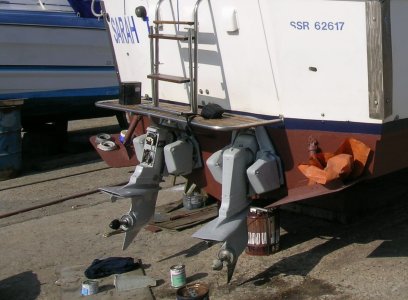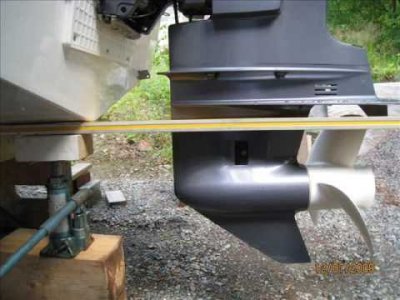Refueler
Well-known member
I am not a mobo person really ... having been a sailboat person most of my life. Mobo's have been an occasional item apart from the ex soviet speedboat I have.
The Primor 24 has a 170HP VP AQ170a with 280 sterndrive leg ....

She has manual electro-hydraulic trim tabs as you see .. and I have suspicion that the port side one may not be operating as well as the stbd - I noted a slight oil sheen on the water after testing the other day alongside pontoon.
The question is :
Do I use the sterndrive leg trim as well as trim tabs when running ?
I have had conflicting advice on this ... one person said yes to get prop face as near perpendicular to horizontal and get max thrust ... while most have said no as that is only with outboards ... that I should just concentrate on using the trim tabs to get hull to best angle. That using the trim on the drive leg can lead to premature failure of the bellows .. they also advised not to lift leg when boat not in use ... that its really only for beaching / shallow water and trailering ..
So over to you guys and gals ....
The Primor 24 has a 170HP VP AQ170a with 280 sterndrive leg ....

She has manual electro-hydraulic trim tabs as you see .. and I have suspicion that the port side one may not be operating as well as the stbd - I noted a slight oil sheen on the water after testing the other day alongside pontoon.
The question is :
Do I use the sterndrive leg trim as well as trim tabs when running ?
I have had conflicting advice on this ... one person said yes to get prop face as near perpendicular to horizontal and get max thrust ... while most have said no as that is only with outboards ... that I should just concentrate on using the trim tabs to get hull to best angle. That using the trim on the drive leg can lead to premature failure of the bellows .. they also advised not to lift leg when boat not in use ... that its really only for beaching / shallow water and trailering ..
So over to you guys and gals ....





